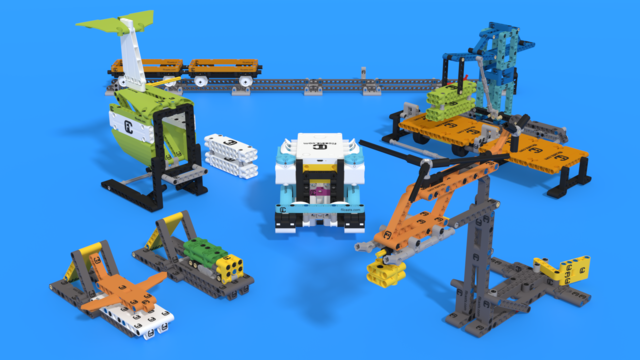What if the robot could make a mistake and still accomplish the mission? That is what we demonstrate with this tutorial - a few principles for error tolerance and self-correction. Even though we start the robot from a few different places, we manage to complete the mission with the same program every time. We use the LEGO Education SPIKE Prime robot, and we continue directly after the 10 out of 10 tutorial
- #2088
- 03 Jan 2023
- 3:01
- LEGO Education SPIKE Prime
- Align, Push, Auto-correct, FIRST LEGO League, FIRST LEGO League 2021-2022 Cargo Connect, Robot Base Chassis, Attachments, Scratch, LEGO Education SPIKE App Word Blocks 2
Autocorrect, Self-correct, Error tolerance
These are all referring to the same thing. The robot makes a mistake, there is an error in its movement because it is moving in a physical world. There are principles that we can follow to compensate for this mistake.
English
In this video tutorial, we accomplish a FIRST LEGO League mission that's called Accident Avoidance. And the goal of the mission is to just push slightly on the orange part without the whole mission model falling. Our goal with this mission model is to demonstrate how do we build robots that are error-tolerant and that are auto-correcting, that we could start them from here, or from here, or from here, or from here, from many different places. They could be in many different places on the field, and it doesn't matter. We can start them from anywhere, but they will accomplish the mission. And it's a consistent and reliable behavior where the robot auto-corrects for the error that it is making. We can start it from anywhere, and it will still accomplish the mission. Now let's discuss the principles. How do we do this? Our idea for this tutorial came about when we were recording the ten out of ten. You see the first execution and it's not important that it does the mission ten out of ten. What's important here is that there is a way for the robot to self correct, to be auto correcting, to have a certain degree of error tolerance. Now we start it from a different place, and it's a completely different place, and it goes to the border in a completely different angle. But still the robot accomplishes the mission. Why? Because of the use of the sensors one thing and second thing, because we align to the border. We started from a third position, which is completely different. There is like a whole robot difference between the three positions. And again, the robot manages to accomplish the mission. The principle here is that we move and we align to the border. After we align to the border with the robot, we know where the robot is. We turn left and then we use the ultrasonic sensor. As we use the ultrasonic sensor, we move and we accomplish the mission. That's it. That's the principle. We compensate for the error when we align to the border, and then we compensate for the error that the robot is making. When we use the sensor. It doesn't matter where we start the robot, we compensate for the error in this way. It's a consistent and reliable robot. I hope this is helpful and I'll see you in the next tutorial.
Курсове и занятия включващи този Урок
Този Урок е използван в следните курсове и занятия.

FIRST LEGO League 2021-2022 Cargo Connect solutions and review with LEGO Education SPIKE Prime
In this course, we demonstrate and explain example solutions for the FIRST LEGO League 2021-2022 Cargo Connect competition. Just like every year, we share solutions only after the season is over. In this course, you will find examples and principles of building attachments and will learn how to program consistent and reliable robots for each mission. You can follow the course, and as you go through each mission, try to replicate the solutions to understand the programs and explanations. Upon completion of the course, you will have many new ideas about how to approach the missions in every FLL robotics competition and how to help your team score more points.
Before starting this course, we suggest you go through the FIRST LEGO League robot game guide
- 55
- 181:18
- 34

M06. Accident Avoidance
In this video tutorial, we demonstrate how to gently push an object to accomplish the mission. "Gently" means that we are pushing but not with force. If we push using force, the mission model will fall, and we will not accomplish the mission. We use LEGO Education SPIKE Prime and the Ultrasonic Sensor.
- 4
- 1
- 2
- 3d_rotation 4